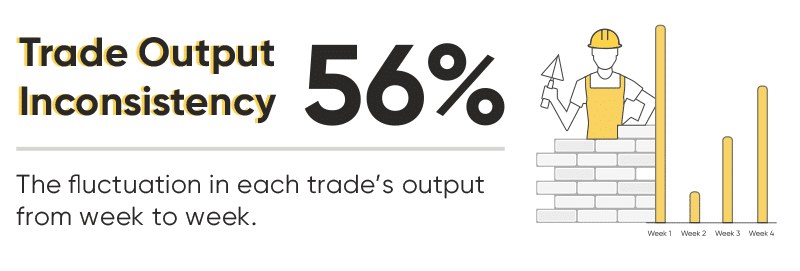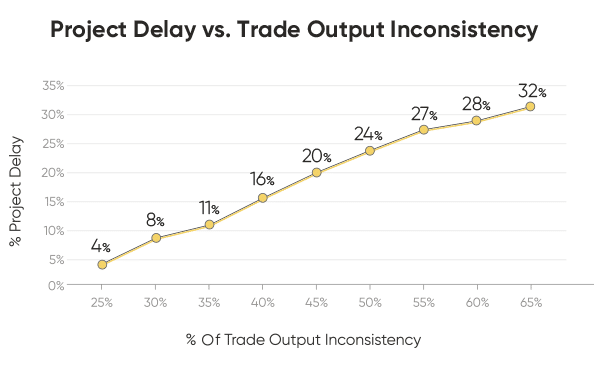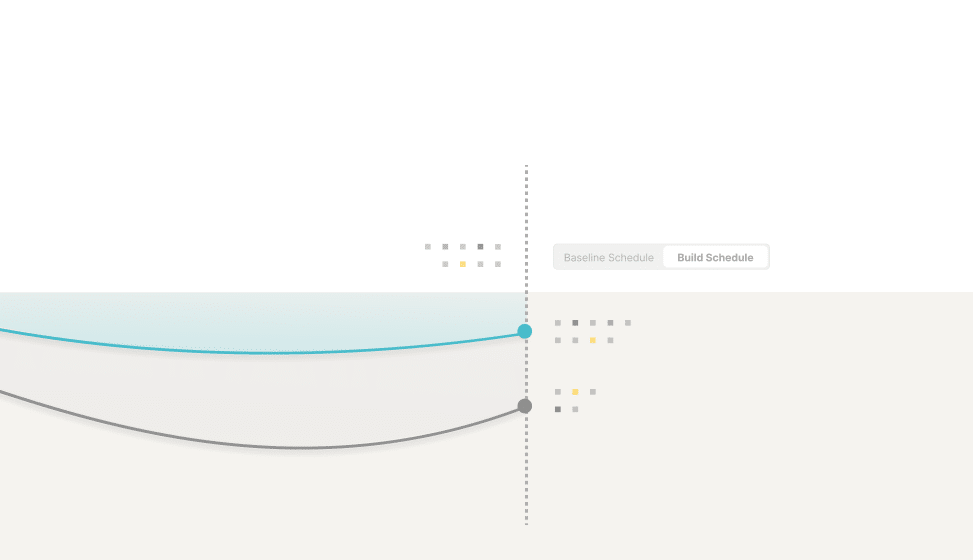CONSTRUCTION MANAGEMENT Achieving the Full Potential of the Last Planner System: Accurate Progress Metrics

This article originally appeared on the Lean Construction Institutes' website on March 7th, 2023, as part of our sustaining sponsorship and partnership.
Managing a construction project is no easy feat. Between the conflicting needs of multiple trades, the number of individual tasks that need to be tracked, the constant need to update and adjust the projected timeline, and the limited number of hours in a day, managing a project is not for the faint of heart.
One advanced method used to contain this overwhelming task is the Last Planner System. With its focus on predictable workflow and clear, transparent communication, its goal is to create an accurate timeline with reliable results.
Based on the goals and principles of the Last Planner System, we like to assume that implementing LPS in a project would lead to more consistent output throughout the construction process. But, we all know what they say about assumptions…
New Findings
At Buildots, we use AI-based progress tracking to provide real-time visibility and control into construction projects. We recently had the opportunity to conduct a data-backed study on the areas where construction projects commonly face inefficiencies. By analyzing data from 64 projects worldwide, we looked for trends in how work progresses and what the common problems and the effects of those are.
One metric we examined was how consistent trade output was. To do this, we measured how much work each trade completed every week, then compared those weeks to each other. We were also able to pull out projects that were using the Last Planner System and compare them to projects using more conventional process management systems.
We found that LPS projects perform better than traditional systems, but there is still a lot of room for improvement.
Let’s Look at the Data
The average output inconsistency across all projects was 56%. This means that however much work a trade completed one week, they could complete 56% more or 56% less the next week. This leaves huge room for improvement in terms of consistent and predictable work completion and schedule adherence.

We also found a strong linear correlation between trade inconsistency and project delivery delays. Delays are so strongly connected to trade inconsistency that cutting inconsistency in half – from 50% to 25% – would see a project reduce the risk of delayed delivery by a factor of 6.

When looking only at projects using the LPS system, trade inconsistency did see a reduction to 46%. While this is a definite improvement over traditional scheduling tools, one could ask – is that the best we can hope for?
Improving Consistency
Knowing that the Last Planner System is successful in reducing trade inconsistency proves that its principles and framework are working. But the fact that inconsistency is still a lot higher than any of us would like, means there are some gaps in the system.
With LPS being a manual system, team members track their progress, then self-report in a meeting or huddle. Manual tracking leaves progress data open to human error and subjectivity. For self-reporting, team members need to be available for regular meetings and as the size and complexity of projects continue to increase, this becomes more difficult to achieve. Both of these features make data collection less of a science and more of a guesstimate.
This means that LPS progress data collection and analysis are often not as accurate, timely, or functional as they could be for maximum efficiency.
When considering all of these challenges and the necessary cultural adjustments, it becomes clear why many project teams are unable to fully implement LPS. As a result, projects often fail to achieve the desired results, which is likely due, in part, to this incomplete implementation
The quality and accuracy of progress data are what drive the LPS framework. If data is lacking, inaccurate, or not applied to the plan, LPS benefits are reduced as team members don’t have a clear picture of where they are or the speed at which they’re moving.
With technological innovations, we now have new ways to access high-quality, accurate data automatically. The ability to automate the collection and analysis of progress data reduces human error in tracking, increases the efficiency and effectiveness of daily and weekly progress meetings, and ensures that if a team member is unable to attend a meeting, the relevant information is still available to the group. Once data is available, driving proper implementation of the rest of the framework is far easier.
Practical Application
In practice, the combination of automated progress data with LPS means that no one is caught off guard when someone’s reporting in the weekly meeting is a bit more ambitious than realistic. When the team knows exactly how complete a task is, they can accurately adjust the schedule to work within reality.
If one trade’s progress data is showing large swings from week to week, they may decide to extend the timeline on their work and make a recommendation that they perform at a slightly reduced, but more consistent pace. This increased consistency makes the overall schedule more predictable and wards off any last minute surprises.
When the Last Planner System is fed with high-quality, accurate, automated data, all elements of LPS perform better and more efficiently. Team meetings are more productive and the decisions and schedule adjustments that arise from them are more attainable. The workflow becomes more transparent as everyone is working from the same dataset and has equal knowledge about all aspects of the project.
With accurate, easily collected data, we can remove many of the barriers to fully implementing LPS, or any other lean construction management methodology. With this shift, we can begin to enjoy all the benefits these systems offer.
Supporting the Last Planner System’s workflow with hard data allows a project to align itself more closely with lean construction principles. It reduces waste and increases value by streamlining planning sessions and having data-driven benchmarks to present to shareholders.
If you’re looking to improve the efficiency and predictability of your LPS execution, combining automated data collection and analysis with your existing scheduling framework provides you with the accurate progress data you need to reduce trade inconsistencies and the risk of delays.


Author
AVIV LEIBOVICI | CPO & CO-FOUNDER AT BUILDOTS
Aviv is a construction tech expert who is passionate about using technology to improve the industry through the use of data and AI.


